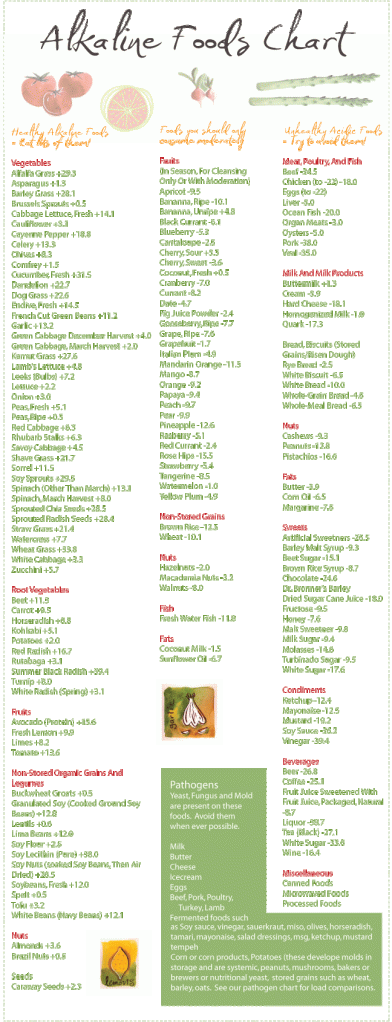Talking pH and acid-alkaline balance
pH (potential of hydrogen) is a measure of the acidity or alkalinity of a solution—in the case of your body, you can measure pH in your blood, urine, or saliva as the solution. pH is measured on a scale of 0 to 14—the lower the pH the more acidic the solution, the higher the pH the more alkaline (or base) the solution. The body’s acid–base balance is normally tightly regulated, with optimal pH being neutral at 7.
Acid-alkaline has long been a measure of health, but recently its popularity as a lifestyle (or diet) has surged thanks to notable books—Crazy Sexy Diet, The pH Miracle, or Alkalize or Die. Proponents of the alkaline lifestyle consider it to be vital to health to consume alkaline foods because the standard American diet is largely acidic, and mild acidosis can cause a myriad of problems. Dr. Robert O. Young created his trademark New Biology, which most simply stated says “the over-acidification of the body is the single underlying cause of all disease.”
Why You Need to Be pH-Balanced
While fatigue is probably the major symptom of an overly acidic body, a host of other ailments can results from mild acidosis, include weight gain and obesity. Here are a few other problems identified by the American Journal of Clinical Nutrition:
- Cardiovascular damage, including the constriction of blood vessels and the reduction of oxygen
- Bladder and kidney conditions, including kidney stones
- Immune deficiency
- Acceleration of free radical damage, possibly contributing to cancerous mutations
- Premature aging
- Osteoporosis; weak, brittle bones, hip fractures and bone spurs
- Joint pain, aching muscles and lactic acid buildup
What to Eat
Veggies, mostly. Juicing and other green drinks are highly recommended. Most alkaline diet practioners recommend 65-80% alkaline foods paired with the appropriate percentage of acidic foods. Check out this handy chart from uber-popular blog The Alkaline Sisters that details the alkalinity of common foods.
How to Test Your pH
The most accurate test is a blood pH test, but that requires a doctor’s visit. pH test strips are relatively inexpensive and can help you determine your body’s acidity or alkalinity. Test your pH an hour before a meal or two hours after a meal. Testing several times a day at first can give you a good average, a couple times a week. Urinary pH should fluctuate between 6.0 to 6.5 in the morning and between 6.5 and 7.0 in the evening; saliva should stay between 6.5 and 7.5 all day.
Getting Started
Ross Bridgeford, The Alkaline Diet Guy and co-founder of Energise for Life, suggests five steps to starting an alkaline diet. For the full details, click 5 Easy Steps to an Alkaline Diet.
- Hydration: Lemon can help alkalize water. (Try the Breakfast Drink!)
- Go Green: Alkaline foods are those you already know are good for you: fresh vegetables, salads, leafy greens, low-sugar fruits, nuts, seeds and healthy oils; unrefined, organic, high-water-content foods.
- Transition: Take it slowly!
- Oxygen: Doing a simple breathing exercise once or twice per day gives your body a huge helping hand in removing these acids.
- Supplements: Can include green powder, alkaline minerals (sodium, magnesium, potassium and calcium), or Omega oils.
Image: Some rights reserved by si_fu


